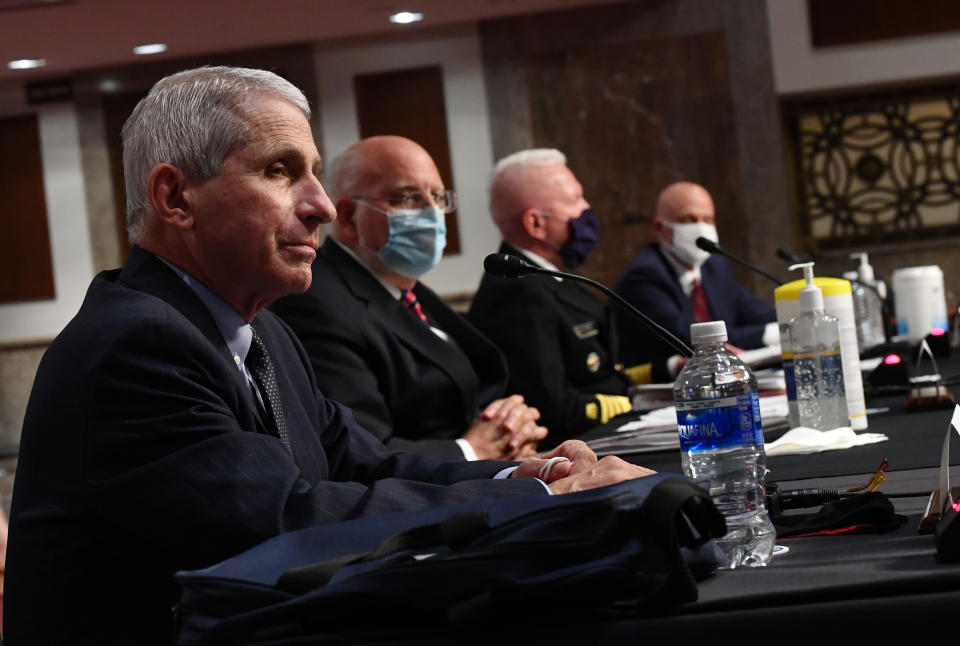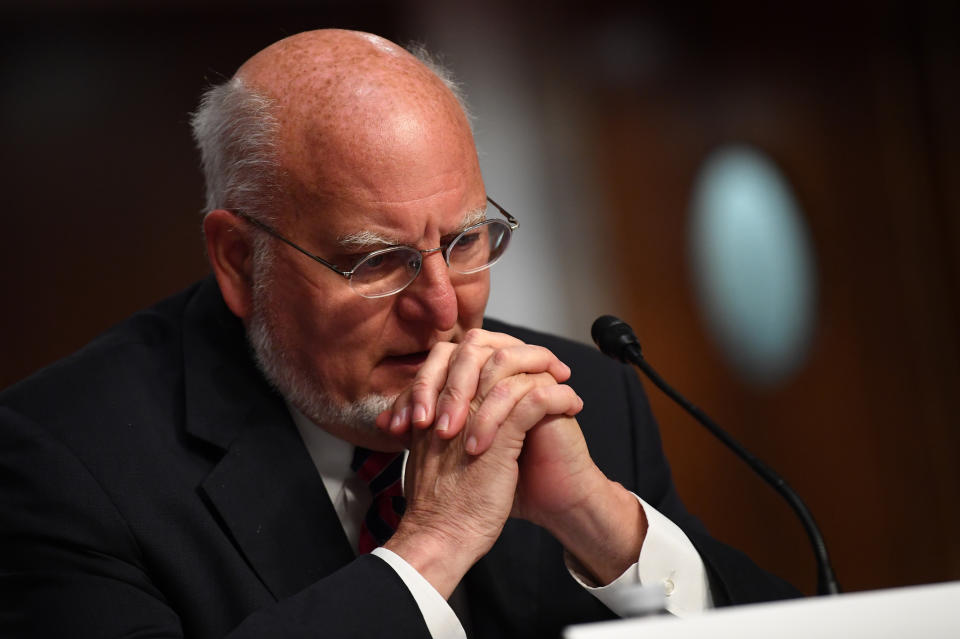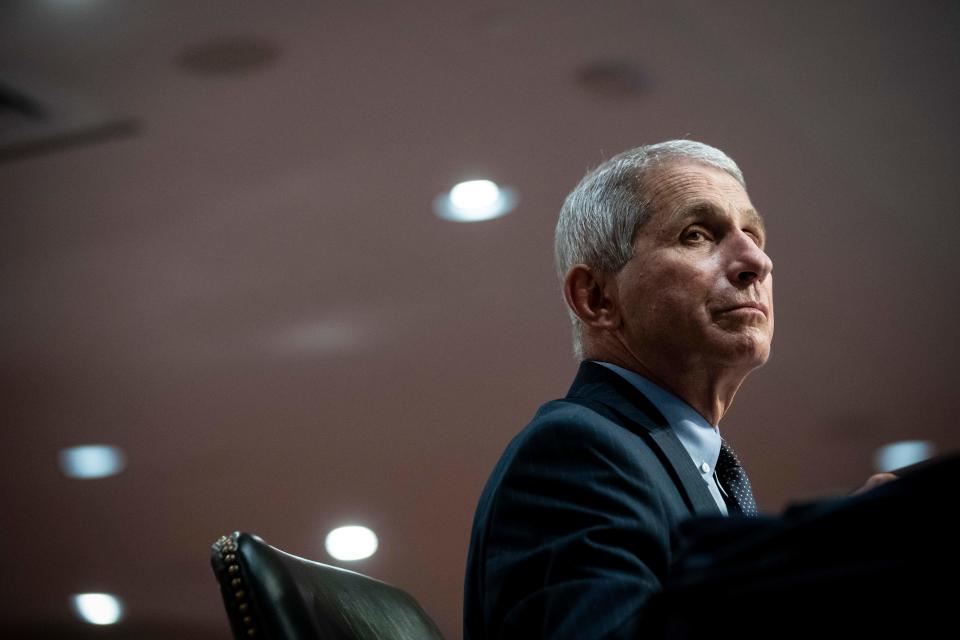After months of being silenced, CDC is easing back into public view
WASHINGTON — On June 12, 2020, the Centers for Disease Control and Prevention did something it had not done for months: It held a press briefing.
Widely touted as the finest public health agency in the world, the CDC had been dormant since March 9, when one of its top officials held a teleconference with journalists. On that day, Dr. Nancy Messonnier, director of the agency’s National Center for Immunization and Respiratory Diseases, counseled the American public to “fight the urge to buy a mask” to protect against the coronavirus.
Then came a protracted and, for many, problematic silence. CDC officials hope that is coming to an end, but a pressing question remains: Can the agency reclaim its voice while avoiding political blowback from the White House? Can it find a way to communicate valuable scientific information after three muted months during which some substantive communications from the CDC came only in the form of leaks to the press?

As the number of coronavirus cases in the United States spiked in late March and early April, the White House coronavirus task force convened almost daily before a thinned-out, socially distanced presidential press corps. The briefings became a kind of daily ritual, watched at their height by millions. Dr. Anthony Fauci of the National Institutes of Health became a national celebrity; the scarves of Dr. Deborah Birx, a leading HIV/AIDS expert at the State Department, were the subject of a “Saturday Night Live” skit.
CDC director Robert Redfield was on the task force, but he rarely stood on the podium of the Brady Briefing Room alongside Fauci and Birx. Redfield’s most prominent appearance at a task force briefing was on April 22, following an interview he gave to the Washington Post in which he said that if the coronavirus and influenza viruses attacked in concert next fall, the effect could be disastrous.
At the April 22 briefing, an obviously annoyed President Trump said that would not be the case, then proceeded to have Redfield — a ponderous speaker who seems uncomfortable in front of a microphone — deliver a tortured explanation of what he had meant. But when a reporter later asked him if the Washington Post had misrepresented his words, as Trump claimed the paper had, Redfield defended the article.

“I’m accurately quoted in the Washington Post,” he answered as Trump glowered. There would not be much more Redfield in the White House after that. Reopening plans leaked twice, each time contravening a more lax White House approach and suggesting that science had been made subservient to politics.
That left many current staffers dispirited and many former ones mystified. Among the latter group is Dr. Thomas Frieden, who led the CDC during the Obama administration. “The CDC is not being allowed to speak,” Frieden told Yahoo News in May. “It is just inconceivable that for more than two months, the best public health agency in the world has been prohibited from speaking to Americans.”
But as far as the White House is concerned, the CDC has been too concerned with its own stature. “The CDC feels like they should be in charge of this,” said an official who works with the White House coronavirus task force. “The response effort is more than just one agency.” The task force official went on to say that there was some frustration with those in the CDC who saw the Trump administration as making “political decisions — when they're not.”
At the same time, it’s difficult to see Trump’s push to reopen churches, among other moves, as anything but political. As he has demanded to reopen the economy and restart campaign rallies, the CDC has uneasily stood by, sometimes offering gentle caution, sometimes saying nothing.
A spokesperson for the CDC appeared to validate the White House’s suspicion, saying that some within the agency were undermining its standing in Washington. The spokesperson — who could only speak frankly about the situation if granted anonymity — said they were “disappointed” by leaks from the CDC, referencing releases of information to news outlets that seemed to undermine, frustrate or complicate the official position of the administration.
“I hear where the White House is coming from,” the CDC spokesperson said, using with Yahoo News the same protection of journalistic anonymity that alleged CDC leakers have presumably used with other outlets.
Just days after the spokesperson spoke to Yahoo News, Politico reported that the White House was planning to blame the CDC for the administration’s shortfalls in handling the pandemic, which has killed close to 130,000 Americans.
By mid-May, the CDC was already a favored target of some on the coronavirus task force. “There is nothing from the CDC that I can trust,” Birx reportedly said at one meeting of the task force in early May. Just several days later, Peter Navarro, a White House economic adviser, said on national television that the CDC “really let the country down” in the early stages of the pandemic.
Plenty about the CDC’s response has been met with criticism, including its inability to implement a testing regime in February and March (a failure that, in all fairness, can also be attributed to the Food and Drug Administration, as well as to Health and Human Services Secretary Alex Azar, not to mention the president himself).

The confusing guidance about face coverings has been a particular source of embarrassment for an agency that has long prided itself on clarity and integrity. Redfield told a congressional committee in late February that Americans did not need to wear masks. Within a matter of weeks, the CDC would reverse itself on face mask guidance, leading some to wonder if the original guidance against mask wearing had been intended to disguise a shortfall in the national supply of protective equipment.
Sen. Mike Braun, R-Ind., charges that the CDC was not “agile” or “entrepreneurial” in its response, while one close aide to Trump echoed that complaint, saying that the agency’s “bureaucratic mentality” deprived it of “the fierce urgency of now,” a reference to Barack Obama’s famous slogan from the 2008 presidential campaign.
Trump has not voiced concerns, at least publicly, with the CDC over those failures. For his part, he refused to wear a mask, even after the CDC in April issued guidance that face coverings can prevent the spread of the coronavirus.
What has bothered him, paradoxically, is what the CDC got right, as when Messonnier warned on Feb. 25 that “disruption to everyday life might be severe,” or when the CDC’s Dr. Anne Schuchat warned, on the same day, that the virtual outbreak was bound to become a pandemic, contradicting the president and his top advisers.
When the coronavirus task force held a meeting four days later, neither of those CDC officials was present in the Situation Room — though economic adviser Larry Kudlow and HUD Secretary Ben Carson were. In fact, none of the CDC’s top deputies was invited to the meeting.
Messonnier and Schuchat went silent for virtually the entire spring, as Redfield also receded from view.
The CDC spokesperson acknowledged that their agency “slowly but surely took a backseat” to the coronavirus task force. Not only were CDC officials kept off television broadcasts, but Redfield and others could not even hold briefings.
“We continued to ask for approval” from the White House to hold briefings, the CDC spokesperson told Yahoo News. “We were not given approval. Finally, we just stopped asking.”
Still, that spokesperson defends the agency’s response, even if much of that response has been out of public view. “We really have had a seat at the table leading the public health response to this,” the spokesperson maintained.
Others are unconvinced, seeing the CDC’s silence as a potential fatal mistake that deprives Americans of critical information. James Curran, a former top CDC official who is now dean of the Rollins School of Public Health at Emory University, which is adjacent to the CDC’s campus in Atlanta, says it was incumbent on the agency to explain the importance of testing and contract tracing, something he says it never did.
“It seems evident when you hear people talk about testing, there’s no goal,” Curran says. “They’ve been talking about testing for months, as if it’s only a commodity to ship out to states.” Nearly six months since the pandemic arrived in the United States, confused and sometimes contradictory talk of testing continues.

Curran also sees a problem with having Fauci as the administration’s de facto spokesman on the pandemic. Curran calls Fauci a “terrific guy” and an accomplished scientist, but notes that Fauci is an immunologist, not a public health official.
And even Fauci’s ability to speak publicly has been curtailed, since he has a tendency to undercut the always sunny outlook of Trump. That leaves no single person, or single agency, to communicate directly and forthrightly with the public. That the agency is based in Atlanta, not Washington, D.C., only exacerbates the situation, especially in an administration where having direct proximity to the president has been so critical.
The CDC still hopes to regain its voice. The agency spokesperson told Yahoo News that if the CDC can “stick to the science,” it should be able to hold “regular and frequent” briefings. The spokesperson did make clear that Shuchat and Messonnier will almost certainly not be part of those briefings, which will be conducted by Redfield and so-called incident managers knowledgeable about specific aspects of the pandemic.
(Shuchat did give an interview to the Journal of the American Medical Association in which she warned of “way too much virus across the country.” That same day, White House press secretary Kayleigh McEnany described the outbreak as having been largely contained, with only a few “embers” to contain.)
After the months-long hiatus, the CDC returned with a second June briefing, on the 26th. Redfield updated the agency’s guidance on vulnerable populations, which included new data on how the coronavirus affects pregnant women.
This is the kind of uncontroversial information the White House can live with, but the potential for politics to intrude is always there.
During the June 26 briefing, for example, one reporter accused Redfield of “playing down” the extent of recent coronavirus spikes, which he described as confined to only 3 percent of American counties. “We’re not talking about a second wave right now. We’re still in the first wave,” Redfield said. It was an accurate statement, and also the kind of statement that could anger a president displeased by any assertion that the battle against the coronavirus has not been won.
“Public health is always political,” says Curran, the former CDC official now at Emory University. “But public health should never be partisan in an epidemic.”
_____
Read more from Yahoo News:



